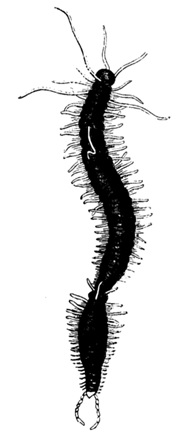Characteristics of phylum annelids Assignment Help
Annelids definition:
Annelids are worm like soft body, segmented animals. This includes, earthworms, leech etc. Going deep into their characteristics, we can obtain lots of useful informations. Hence, some of the interesting characteristics of annelids are briefly described below:
Characteristics of phylum annelid
 Annelid symmetry: Annelids are bilaterally symmetrical animals. They can be excellently divided into two equal halves.
Annelid symmetry: Annelids are bilaterally symmetrical animals. They can be excellently divided into two equal halves. - Body wall and coelom: They have three major portions of their body; outer body wall, coelom and the gut. When we talk about the body wall; it consists of cuticle, circular muscle, longitudinal muscle, and chaetae. The body is covered by cuticle and underneath it is have epidermal microvilli. Under the epidermis lies circular muscle. The body of annelids also contains longitudinal muscle that lies below the circular muscle. Coelom is fluid filled cavities that have gametes in them. It is also divided into different compartments that protect the animal from any kind of injury. Coelom also helps in easy and smooth locomotion of the body.
- Parapodia: This is one of the important characteristics of phylum annelids, basically the polychaetes. These are the extensions of the body wall that also consist of chaetae. The parapodia are divided into two main types: nopopodium and neuropodium. Notopodium are present dorsally whereas neuropodium are present ventrally. These structures consist of chaetae, gills and cirri. Hence parapodia in annelids help them in swimming and crawling.
- Annelid nervous system: The nervous system of annelids is not very complex and is easily understood; still it varies with the forms of life they live. Those annelids that live an active life have complex nervous system than those who lives a sessile life in the ground. Nervous system consists of cerebral ganglion in the brain that connects with the ventral nerve cord through circumpharyngeal connectivity.
- Annelid sense organ: Sense organs are the important part of the body. Though the sense organs are not highly developed, but all those essentials for this life form are present. Firstly comes the palps and antennae, these structure are located on the head and function like a sensory receptors. The other is Nuchal structure that acts as a chemosensory receptor and is inverted from the posterior part of the brain. Pair of eyes is present that helps in vision and the lateral organs along with statocysts are present.
- Annelids circulatory system: The circulatory system is of closed type and excretion takes place through nephridia. There is also major ducts called; gonoduct that helps in the transfer of gametes from coelom to the exterior.
- Annelids reproduction: Both sexual and asexual reproduction takes place in annelids. Asexual reproduction takes place by fission where the posterior portion of the body breaks and generates into new life. Likewise, sexual reproduction takes place by copulation. In this, two annelids lay opposite to each other and transfer of fluid from one to the other occurs. In some, the organ called spermathecae is also involved, hence forming a cocoon around the egg by the fluid secreted from the clitellum.
Characteristics of phylum annelids Assignment Help By Online Tutoring and Guide Sessions at AssignmentHelp.Net
These are some of the general characteristics of annelids that help in understanding the life form of this phylum correctly and accurately.
If you are finding any problem in completion of assignment of annelida, contact to the qualified team of assignmenthelp.net. Yes, this site has all the well equipped technology that will help you understand annelids, so that assignment can be completed before the deadline. In case of any difficulty, our team will do phylum annelida assignment for you. Your assignment will be handled to the expert of this field. They will provide you quality work on time including all the necessary informations.
Image reference: http://commons.wikimedia.org/wiki/File:Annelid_Mivart.png


